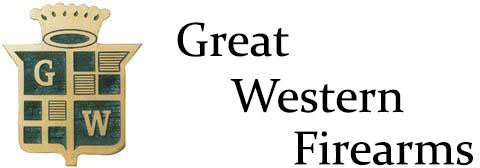![]() n the beginning, there was the Colt Single Action Army Revolver, and it was good.
n the beginning, there was the Colt Single Action Army Revolver, and it was good.
Hell, for its day it was bloody marvelous—light, well-balanced, easy to maintain, extremely well finished—and in its first issue was manufactured in many configurations and a zillion calibers (actually 36). It was produced from 1873 until 1941, when the clouds of war darkened the European skies, and Colt was needed to concentrate on very modern handguns and machineguns. Besides, the SAA machinery was a little long in the tooth and interest in the old Peacemaker had waned. Production ended at #357,589, and very few tears were shed. Then came television and the TV western in the 1950’s.
New interest in the SAA started early among the nation’s shooter/collectors, and the studios needed more hoglegs.
Entrepreneur and firearms enthusiast William R. Wilson recognized the need and the opportunity. In 1953 after a trip to Hartford confirmed that Colt had no interest in resuming its SAA production, Wilson returned to Los Angeles where he and his two partners, a stockbroker and a prominent surgeon founded the Great Western Arms Company to produce an almost-exact clone of the old Model P for television and movie westerns. The only real difference was the spring-loaded firing pin in the frame, and the screw pitch of the bolt, hammer, and trigger screws. Colt hammers were an option, but Colt, or Colt style hammers with the firing pin in the hammer appeared to be used in the first 350 revolvers. Warners, Fox, Universal, Disney, Columbia, RKO, MGM, Ziv, and Paramount (Republic was gone) all purchased Great Westerns in .45 Colt in order to utilize 5-in-one blanks.
Another Hollywood entrepreneur and gun shop owner, Hy Hunter, became involved in the marketing and promotion of the Great Western firearm. In addition to the Peacemaker copy, Great Western manufactured a close copy of the Remington derringer in .38 Special and .38 S&W centerfire calibers. Both the Great Western revolver and derringer were 100% manufactured in Los Angeles. Kit-guns with a 0 prefix to the serial number were offered at a lower cost. Examination of the only known boxed and original unfinished—and unassembled—kit gun, a 7-1/2 .44 Special, revealed that the pre-assembled barrel to frame has a fairly smooth barrel but the investment cast frame has about the roughness of #320 sandpaper. The back strap and trigger guard were fairly smooth, and all the small, and internal parts were finished and in a sealed plastic bag. A very good instruction sheet is included. Obviously, a competent gunsmith was required to finish the frame so as not to “dish” the screw holes. Self -assembly was NOT a good option for amateur night!! This collection includes at least 12 beautifully finished and timed kit guns, so forget the story that these revolvers are “junk”! Fast Draw models had light actions, and had brass back straps and trigger guards, but beware! these revolvers must have matching frame serial numbers on those parts.
During the years of manufacture, Great Western revolvers and derringers were presented to many notable Americans, a la Sam Colt. Many finishes and gold and silver inlays were offered, and hand engraving was almost always executed by Carl E. Courts of Long Beach. Probably the most elaborate and historic Great Western is a .38 Special, 5-1/2”model presented to President Eisenhower in 1955. It’s in the Eisenhower Library.
Serial numbering followed the 1920s-style of first generation Colts: marked on the frame in front of the trigger guard, on the back strap (under the grips), on the rear face of the cylinder (last three digits), and (usually) on the rear of the barrel (under the ejector tube). Use of the GW prefix to the number seems to have been arbitrary during the production run. Derringers never used the GW prefix. Some sources suggest that 55,000 Great Westerns were manufactured, but it seems unlikely.
REGULAR calibers offered were .22LR, .38 Special, .357 Magnum, 357 Atomic, .44 Special, .44 Magnum, .45 Colt, with a handful of .44-40s and the ultimately illusive 45ACP. Other calibers, such as .22 Magnum and early Colt/Winchester rounds, were never offered, but occasionally cataloged! Quite a few .22 Hornets were privately ordered, but were not cataloged. Empirical evidence suggests that the .22LR was far and away the most common caliber, accounting for 50% of production.
Although Great Western single actions beat both the Colt second-generation SAA and the Ruger Blackhawk to the marketplace, the earnest little Miner Street company couldn’t compete with the big boys. By 1962 the Great Western Arms Company was gone.
